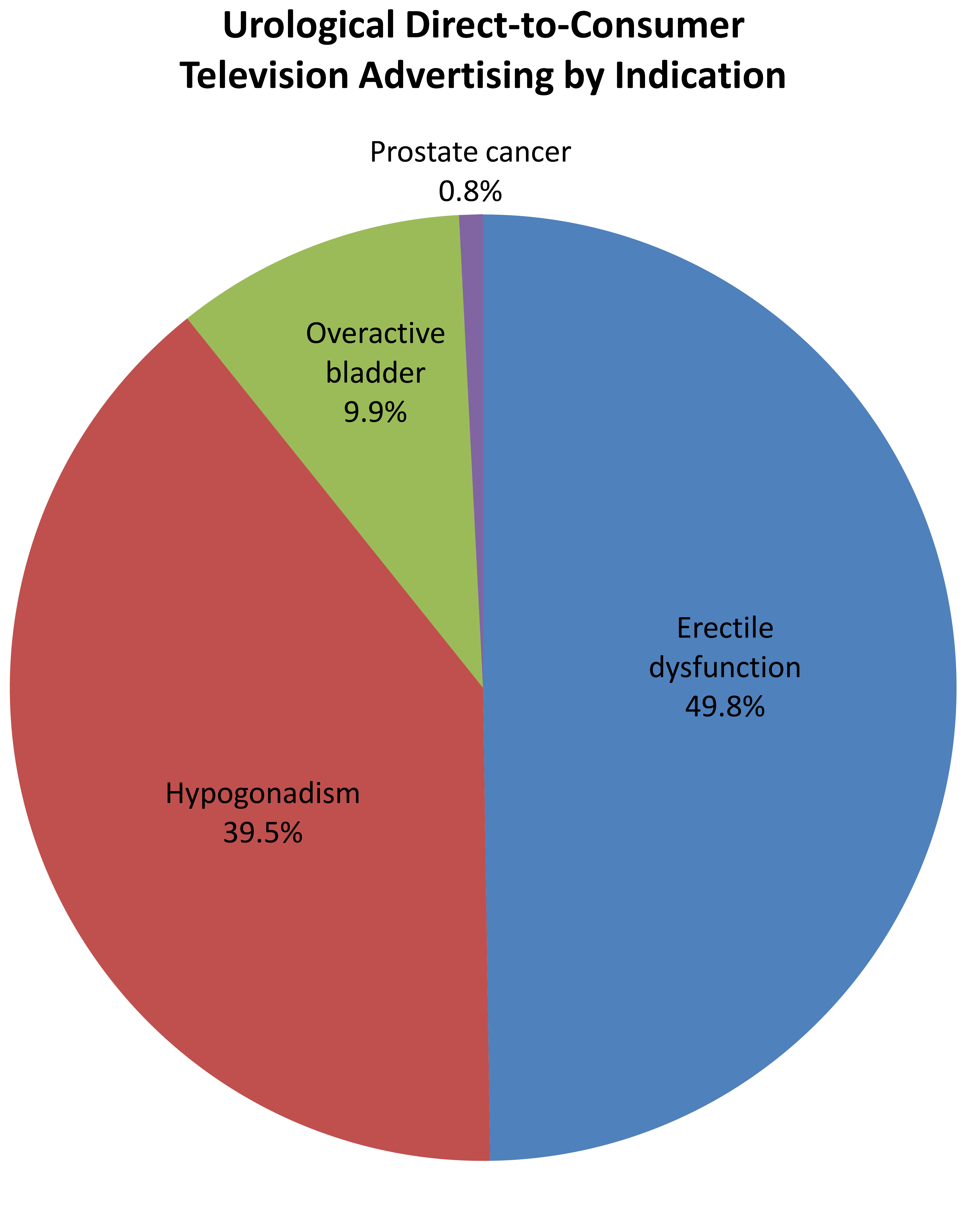|
Back to 2014 Annual Meeting Abstracts
How Often Do Patients See Direct-to-Consumer Advertising for Urological Pharmaceutical Products on Television?
Kevin Koo, MD, MPH, MPhil1, Ronald L. Yap, MD, MBA2.
1Dartmouth-Hitchcock Medical Center, Lebanon, NH, USA, 2Concord Hospital Center for Urologic Care, Concord, NH, USA.
BACKGROUND:
Direct-to-consumer (DTC) advertising expenditures for pharmaceutical products totaled $3.5 billion in 2012, with television commercials outspending all other media combined. Prescription drugs in urology were some of the most highly advertised; among all drugs on the U.S. market, three of the top 12 brands by DTC spending were for urological indications. Despite the widespread prevalence and scope of drug commercials on television in millions of U.S. homes, the extent of DTC advertising in urology and its impact on patient behavior is not well-understood. This study characterizes DTC advertising for urological pharmaceutical products on national television in 2013.
METHODS:
The Vanderbilt Television News Archive is a continuously indexed database of scheduled evening news broadcasts on four national networks (ABC, CBS, CNN, and NBC). The archive includes the date, time, and content synopses for each broadcast and the intervening commercial segments. Prime time evening news programs have been shown to be the peak daily DTC advertising period. The archive was queried with the generic and proprietary names of 77 pharmaceutical products related to urology to identify all commercials that were aired in 2013. Non-commercial segments, such as news coverage of a drug approval, were excluded. Data were extracted and compiled for analysis.
RESULTS:
1353 unique broadcasts representing 825 hours of national network television were captured in the sample. Seven prescription products for four urological indications were advertised (Table): sildenafil (Viagra) and tadalafil (Cialis) for erectile dysfunction; testosterone (AndroGel and Axiron) for hypogonadism; fesoterodine (Toviaz) and oxybutynin (Oxytrol) for overactive bladder; and sipuleucel-T (Provenge) for metastatic castration-resistant prostate cancer. Of these indications, erectile dysfunction and hypogonadism accounted for a large majority (89%) of the commercials that were aired (Figure). 856 DTC advertisements were shown during the 12-month period, with wide variation in the number of commercials for each product aired during the year (range 7-339) and in the number of commercials for all products aired by month (range 40-107). In total, 637 news broadcasts, or 47% of the sample, contained at least one advertisement for a urological drug; patients who watched a network evening news program in 2013 saw a urological DTC advertisement nearly half of the time.
CONCLUSIONS:
Urological pharmaceutical products for several indications are extensively advertised on television, with about half of all evening news broadcasts containing at least one DTC commercial for a urological drug. Providers should understand the extent to which patients may be exposed to and influenced by DTC advertising in urology in order to improve patient education and monitor prescribing patterns.
Television Commercials for Urological Pharmaceutical Products, 2013| Product | n = 856 | % | | Tadalafil (Cialis) | 339 | 39.6 | | Testosterone (Axiron) | 211 | 24.6 | | Testosterone (AndroGel) | 127 | 14.8 | | Sildenafil (Viagra) | 87 | 10.2 | | Fesoterodine (Toviaz) | 54 | 6.3 | | Oxybutynin (Oxytrol) | 31 | 3.6 | | Sipuleucel-T (Provenge) | 7 | 0.8 | 
Back to 2014 Annual Meeting Abstracts
|

|

